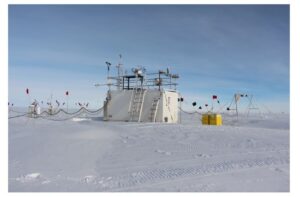Oleg UA6GG has just forwarded WAP an information coming from RX6A, Alexey Romov ( ex: 4K1B,4K1C,4K1K,4K1L)
 As part of the seasonal work of RAE 66 (66th Russian Antarctic Expedition) Alexey P. Romov, RX6A will be part of the Russian Team in the Antarctic . Alexey plans to operate (tentatively) as RX6A/ММ from 07 through 25 December.
As part of the seasonal work of RAE 66 (66th Russian Antarctic Expedition) Alexey P. Romov, RX6A will be part of the Russian Team in the Antarctic . Alexey plans to operate (tentatively) as RX6A/ММ from 07 through 25 December.
From 25 December 2020 through 30 May 2021 (tentatively) Alexey could be active as RIØ1ANT from Progress Station, WAP RUS-11 (pic aside) and Vostok Base (WAP RUS-13) .
Alexey will work preferably CW and FT8 mostly on 7 MHz.
TNX Oleg UA6GG
www.dxtrophy.com
Russia is also planning to reopen Russkaya Station (WAP RUS-12) 
About $4.6 million to be invested in Russkaya Station in Antarctica by 2021. The Russian Antarctic Expedition has obtained about 300 million rubles for the purpose. The decision to reopen the station was made mostly at the initiative of the space corporation Roscosmos. Russkaya Station (WAP RUS-12) was set up in the 1970s. Starting from 1980 it operated as a seasonal field base. Budget constraints forced its suspension in 1990.
For a long time the Russian Antarctic Expedition pressed for its reactivation. A group of researchers visited it in 2008 to install distance monitoring equipment.
Source: https://tass.com/economy/1059721

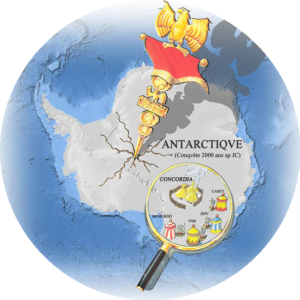 Antarctica has been called “the continent without language”. True languages are spoken only by human beings, and although there are many visiting scientists and support workers in Antarctica these days, this is a modern situation: the continent has never had indigenous languages because it has never had an indigenous human population.
Antarctica has been called “the continent without language”. True languages are spoken only by human beings, and although there are many visiting scientists and support workers in Antarctica these days, this is a modern situation: the continent has never had indigenous languages because it has never had an indigenous human population.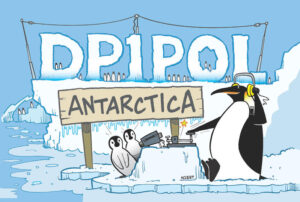 Organizing an Antarctic expedition in the times of COVID19 is quite a challenge, so the German Polar Institute (AWI) had to find a different approach to the logistics for the upcoming Antarctic summer season. All transports will be carried out by ship directly from Germany. There is only a small team of about 20 technicians and scientists travelling to Neumayer III Station (WAP DEU-Ø8), this year. YL Theresa, DC1TH and Felix, DL5XL will be part of that group.
Organizing an Antarctic expedition in the times of COVID19 is quite a challenge, so the German Polar Institute (AWI) had to find a different approach to the logistics for the upcoming Antarctic summer season. All transports will be carried out by ship directly from Germany. There is only a small team of about 20 technicians and scientists travelling to Neumayer III Station (WAP DEU-Ø8), this year. YL Theresa, DC1TH and Felix, DL5XL will be part of that group.
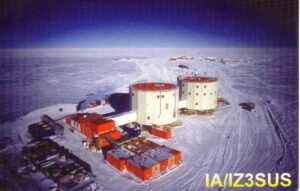 While the French Minister of Research greets the new coming personnel involved in the new Antarctic season at the French-Italian Station, the winter-over did end at Concordia (WAP MNB-Ø3) with the arrival of the first flight from MZS (WAP ITA-Ø1).
While the French Minister of Research greets the new coming personnel involved in the new Antarctic season at the French-Italian Station, the winter-over did end at Concordia (WAP MNB-Ø3) with the arrival of the first flight from MZS (WAP ITA-Ø1).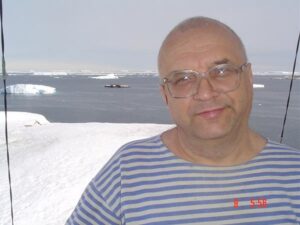

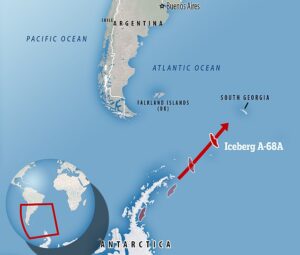 Over the last three years, satellite missions such as Copernicus Sentinel-1 have been used to track the berg as it has drifted in the Southern Ocean. For the first two years, it remained close to its parent ice sheet, impeded by sea ice. But now, as the map shows, the main chunk of the A-68 berg, known as A-68A, is heading rapidly for South Georgia. It is now about 350 km from the island.
Over the last three years, satellite missions such as Copernicus Sentinel-1 have been used to track the berg as it has drifted in the Southern Ocean. For the first two years, it remained close to its parent ice sheet, impeded by sea ice. But now, as the map shows, the main chunk of the A-68 berg, known as A-68A, is heading rapidly for South Georgia. It is now about 350 km from the island.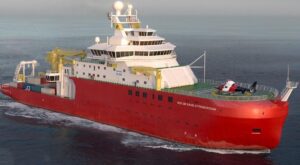 Sir David Attenborough (IMO: 9798222, Callsign ZDLQ3 ) is a Research Vessel registered and sailing under the flag of Falkland Islands. Her gross tonnage is 15000 and deadweight is 5000. Sir David Attenborough was built in 2018/2020.. Her container capacity is 0 TEU. The ship is operated by British Antarctic Survey .
Sir David Attenborough (IMO: 9798222, Callsign ZDLQ3 ) is a Research Vessel registered and sailing under the flag of Falkland Islands. Her gross tonnage is 15000 and deadweight is 5000. Sir David Attenborough was built in 2018/2020.. Her container capacity is 0 TEU. The ship is operated by British Antarctic Survey .
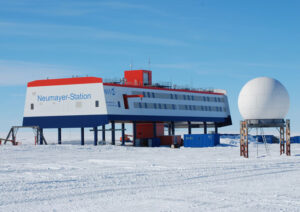 Southgate Amateur Radio News reports that, on November 3, 2020, German TV broadcaster WDR aired a news story about radio amateur Theresa DC1TH who is part of the Neumayer-III Base 2021/22 overwintering crew.
Southgate Amateur Radio News reports that, on November 3, 2020, German TV broadcaster WDR aired a news story about radio amateur Theresa DC1TH who is part of the Neumayer-III Base 2021/22 overwintering crew.  On November 6th, Chile has celebrated the “Chilean Antarctic Day”. WAP join the event and share it with all the women and all the men who love Antarctica and dream of the White Continent.
On November 6th, Chile has celebrated the “Chilean Antarctic Day”. WAP join the event and share it with all the women and all the men who love Antarctica and dream of the White Continent.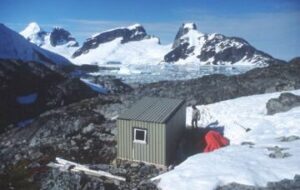 Also known as Rasmussen Point, this Hut is located at 65°15’South, 64°06’West on Rasmussen Island in the North part of Waddington Bay, Graham Coast in Antarctica.
Also known as Rasmussen Point, this Hut is located at 65°15’South, 64°06’West on Rasmussen Island in the North part of Waddington Bay, Graham Coast in Antarctica.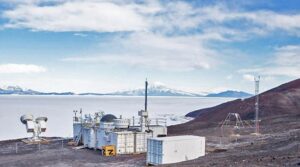 cloud and aerosol instrumentation, has a meteorological relationship with the West Antarctic Ice Sheet (WAIS) via circulation patterns in the Ross and Amundsen seas.
cloud and aerosol instrumentation, has a meteorological relationship with the West Antarctic Ice Sheet (WAIS) via circulation patterns in the Ross and Amundsen seas.